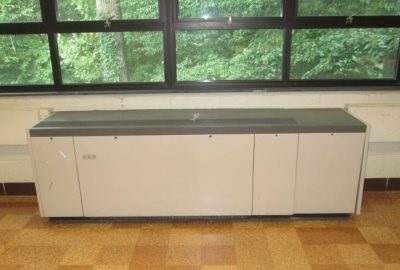Most schools have Air conditioning and Heating units which serve each classroom. These units are called Unit Ventilators, or abbreviated “Univents”. They are also known as “PTAC” Units, which is an acronym for Packaged Terminal Air Conditioners . Unit ventilators are normally installed along the exterior window wall, so that “fresh air” can be drawn into the classroom along with providing heating and cooling to the classroom.
These units get very dirty over time. Contaminants build up from outside air intakes, dusty school environments, and from students dropping all sorts of things down into the unit through the top grille. C’mon admit it, you did it too!
Common dust & dirt, and other contaminants which include mold spore, insects, lint, hair, pencils, leaves, and other debris build up on the grilles, coils, fan blades, motors, condensate pans, fresh air intakes, and also on the unit interior cabinets and insulation.
Unfortunately, this issue is very common and we have found similar or worse conditions in many schools throughout Chester County, Delaware County, Bucks Co., and Montgomery County School Districts. Most schools do not have a Unit Cleaning Protocol or Maintenance Contract in place for Unit Ventilators, and these units sometimes go for years without proper cleaning.

School maintenance personnel typically change the filters twice a year in these units. However, the typical efficiency of these air filters is very low, allowing most of the smaller dust particles and contaminants to pass right through the filter and collect on the interior of the unit ventilator. The unit ventilator can also be a damp environment during the cooling season, causing common airborne mold spore (seed) to cultivate and grow on the interior surfaces, coils, and condensate pans within the unit.
These conditions are an obvious environmental health issue. They also can have a detrimental impact to the HVAC Maintenance & Repair Budget and Costs. Cleaning also significantly increases the Unit efficiency which reduces energy losses and costs. So, it’s a Win-Win-Win Situation for the Students/Teachers, the School District, and Our Environment. This has become especially important with the growing public awareness of Indoor Air Quality in Schools, and public interest in promoting “green building operations”.



